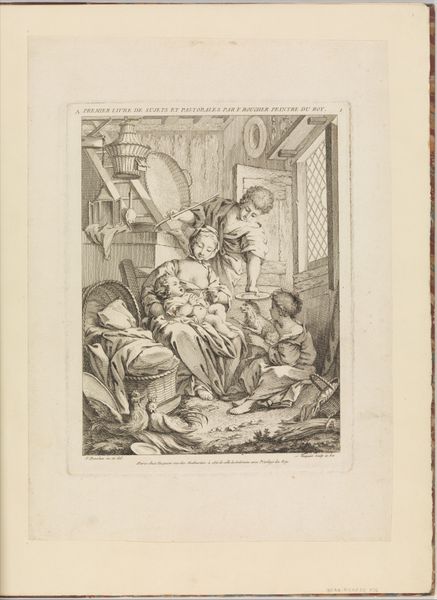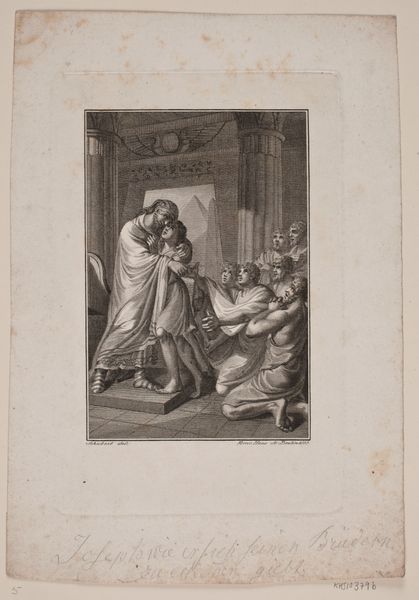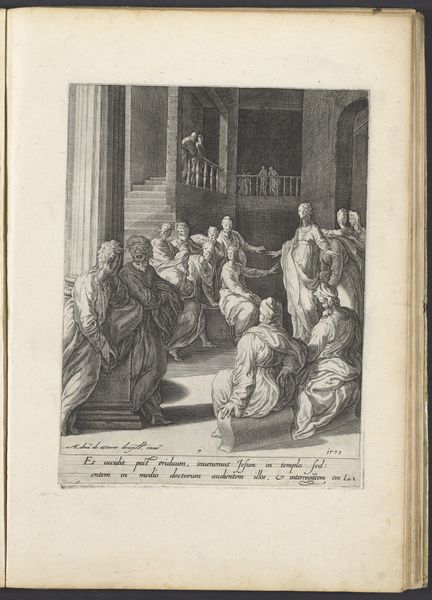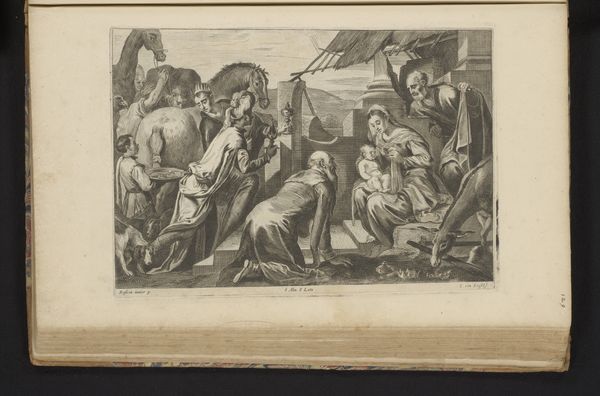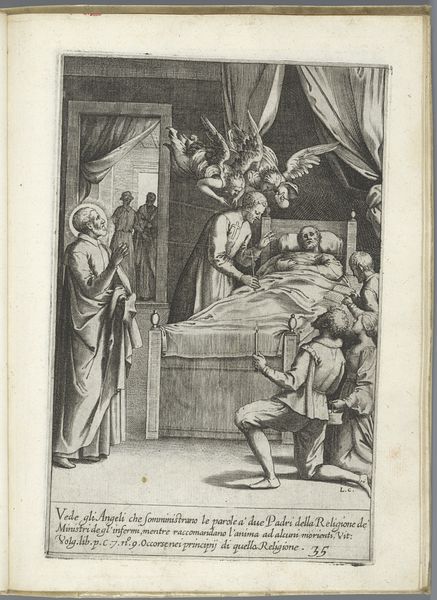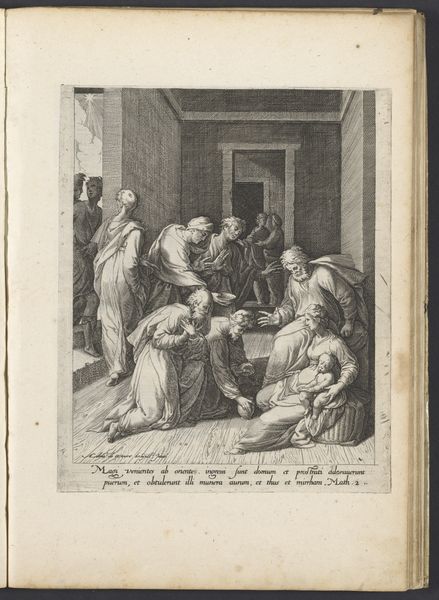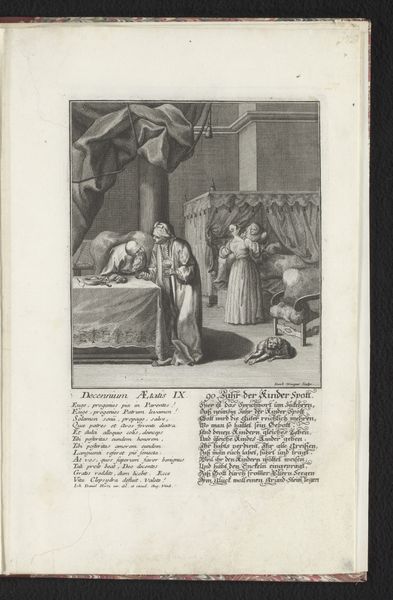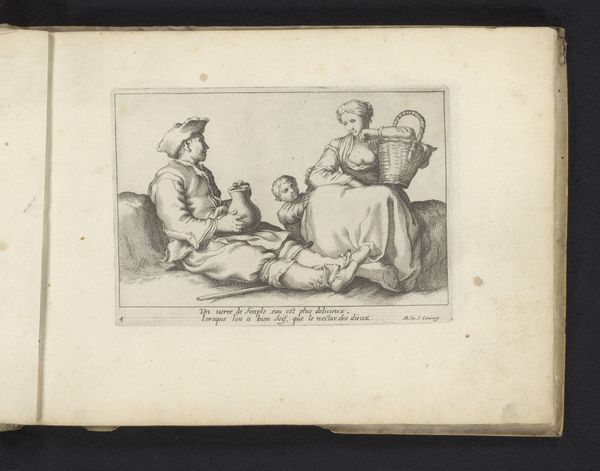
Vrouw op een bank omringd door vijf kinderen terwijl haar man naar haar toe snelt 1750 - 1811
0:00
0:00
Dimensions: height 280 mm, width 212 mm
Copyright: Rijks Museum: Open Domain
Curator: Looking at this engraving, it strikes me how incredibly staged and stiff everything feels. It's like a baroque sitcom, but not as funny. Editor: Well, let's give Carl Friedrich Holtzmann a bit of credit, shall we? This work, believed to be from around 1750 to 1811, is titled "Vrouw op een bank omringd door vijf kinderen terwijl haar man naar haar toe snelt," which roughly translates to "Woman on a bench surrounded by five children while her husband rushes toward her." The long titles were on vogue, I suppose. It offers an interesting snapshot into 18th-century domestic ideals. Curator: Five kids? Wow. Talk about a handful. The woman in the center looks more overwhelmed than joyous. Her husband bursting in is either coming to help or add to the chaos; I can’t tell which. And the fashion… those wigs! Editor: It’s certainly a genre scene meant to evoke specific values. Consider the context: increased emphasis on domesticity and family values during this period. The etching serves to normalize the expectation of women being constantly surrounded by and responsible for their children, even as men come and go. Curator: Normative alright. There’s this tension between celebrating fertility and implying that a woman’s only worth is through bearing children. It reminds me of these Instagram influencers who monetize their families but mask it under "authentic motherhood". Only this feels much less authentic. Editor: And who profits from defining a woman by her reproductive role, I wonder? Notice the positioning of the characters – the children clamber over the seated mother as the male authority strides towards the center of the frame. This depiction visually reinforces those power dynamics, casting doubt as to whether we can even consider motherhood in those times an exercise of free will. Curator: Absolutely. It feels less like an embrace and more like an intervention—or perhaps even a performative demonstration of wealth and societal standing. Editor: Indeed. This image operates on multiple layers—it’s about family, class, status and a system of control exerted over women. It reflects not just the visual styles of the period but also highlights the era’s social and ideological underpinnings. Curator: Food for thought indeed! Makes me appreciate my studio apartment a little bit more! Editor: This baroque 'family portrait' holds up a mirror to how women's roles were historically prescribed and celebrated and how crucial it is to acknowledge the systems that confined so many lives.
Comments
No comments
Be the first to comment and join the conversation on the ultimate creative platform.

